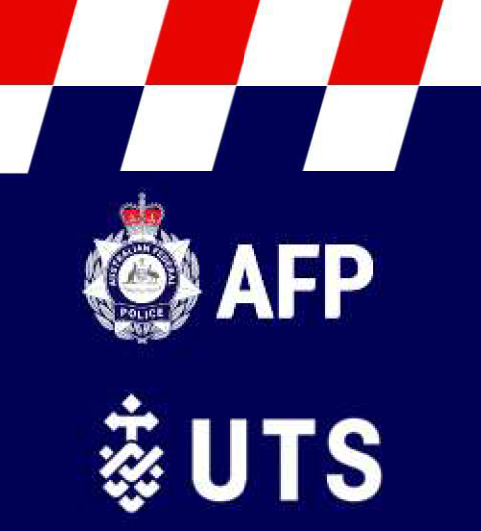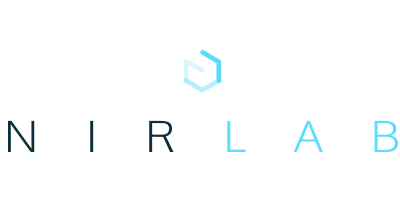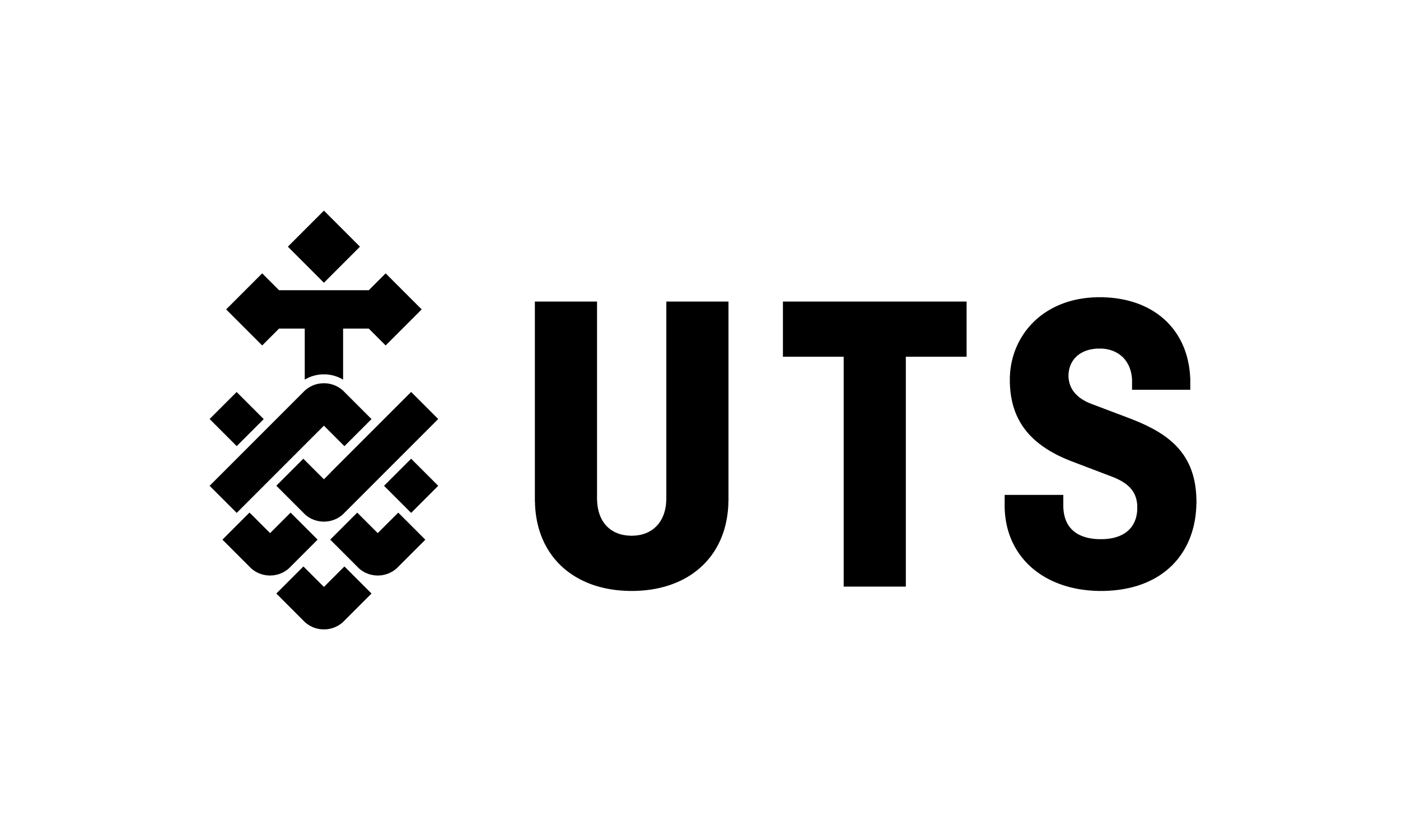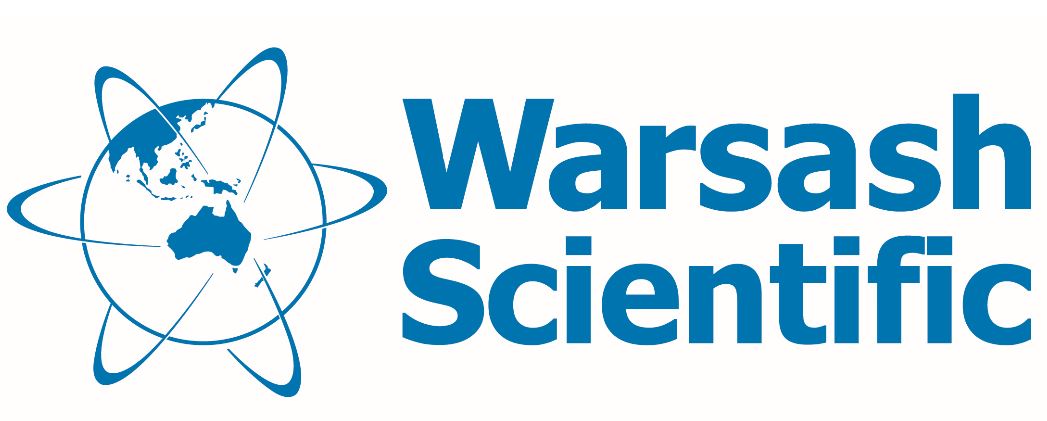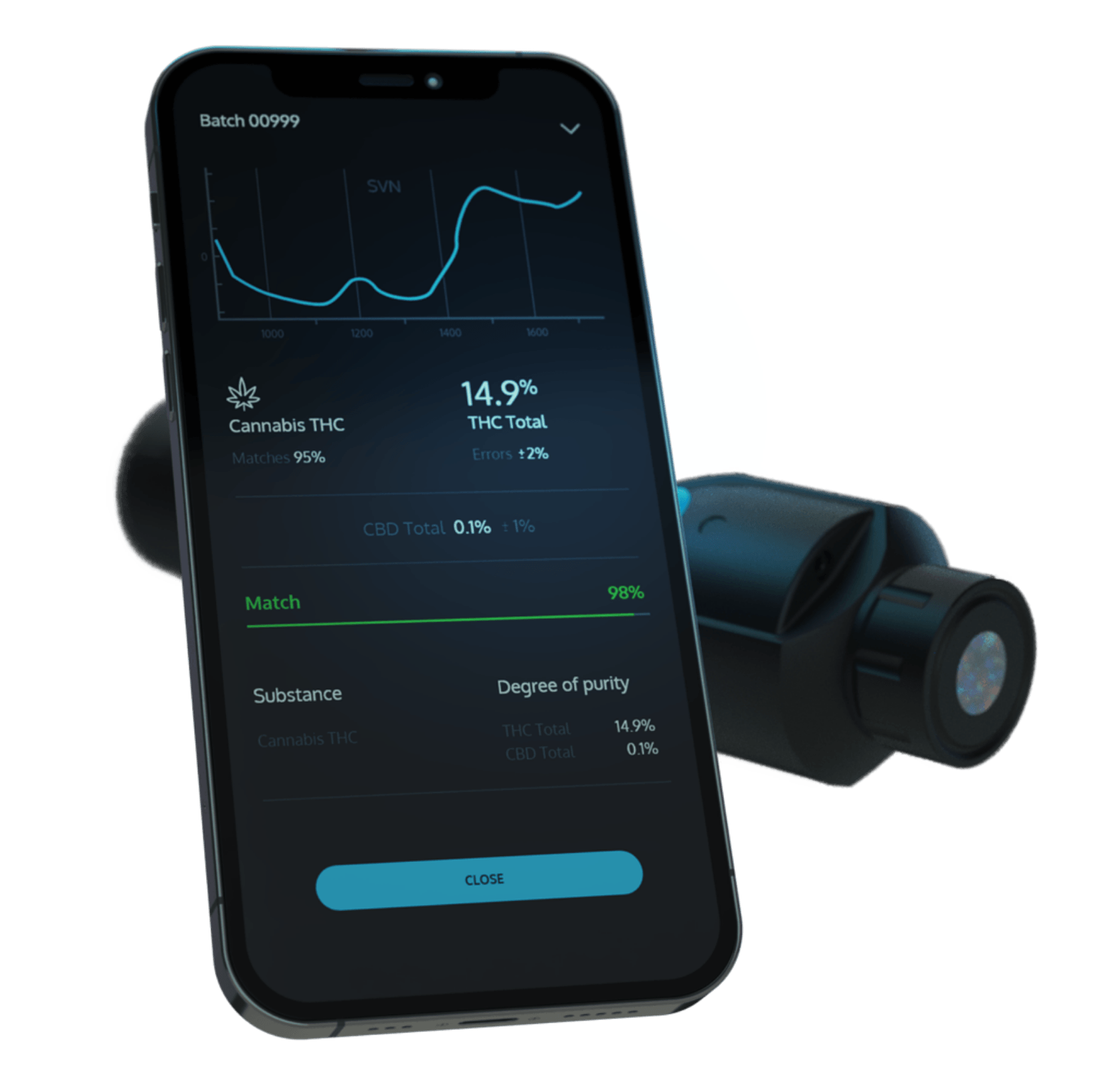
NIRLAB – Protecting Australia by monitoring the illicit drug market in real time using portable near-infrared technology
Posted On: 04 Apr 2024
Using NIRLAB’s portable, instant and ISO 17025 certifiable substance identification and analysis system
This project was funded by the 2022-23 AFP Commissioners Innovation Fund
Presented by Natasha Stojanovska (AFP) and Harrison Fursman (UTS) at the 23rd Triennial Meeting International Association of Forensic Sciences (IAFS) in Sydney
Harrison Fursman1, Natasha Stojanovska2, Marie Morelato1, Scott Chadwick1, Florentin Coppey3, Pierre Esseiva3 and Claude Roux1
1 Centre for Forensic Science, University of Technology Sydney, 15 Broadway, Ultimo NSW 2007, Australia
2 Forensics Command, International & Specialist Capabilities, Australian Federal Police, Sydney NSW 2000, Australia
3 School of Criminal Justice, University of Lausanne, 1015 Lausanne, Switzerland
20th-24th November 2023
- Rapid and accurate identification and quantification of illicit drug seizures remains a constant challenge
- Tumultuous nature of the illicit drug trade is driving the decentralisation of the forensic laboratory in order to increase efficiency2
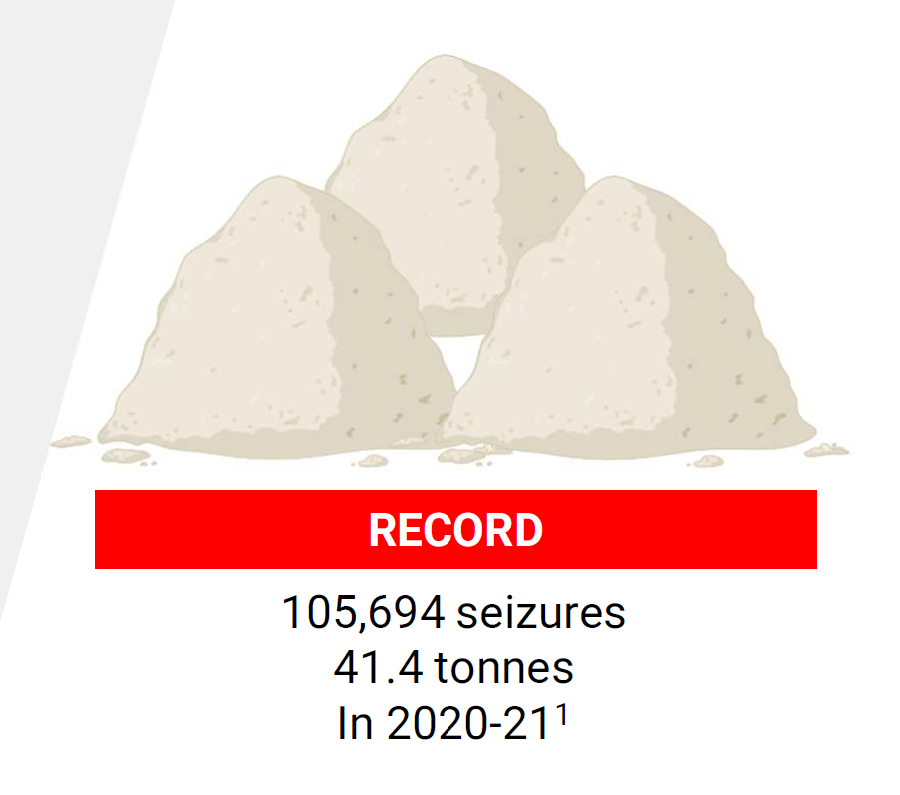
1 Australian Criminal Intelligence Commission, Illicit Drug Data Report 2020-2021, (2023), Commonwealth of Australia: Canberra, Australia.
2 Casey, et al. J Forensic Sci, 2019. 64(1): p. 127-136.
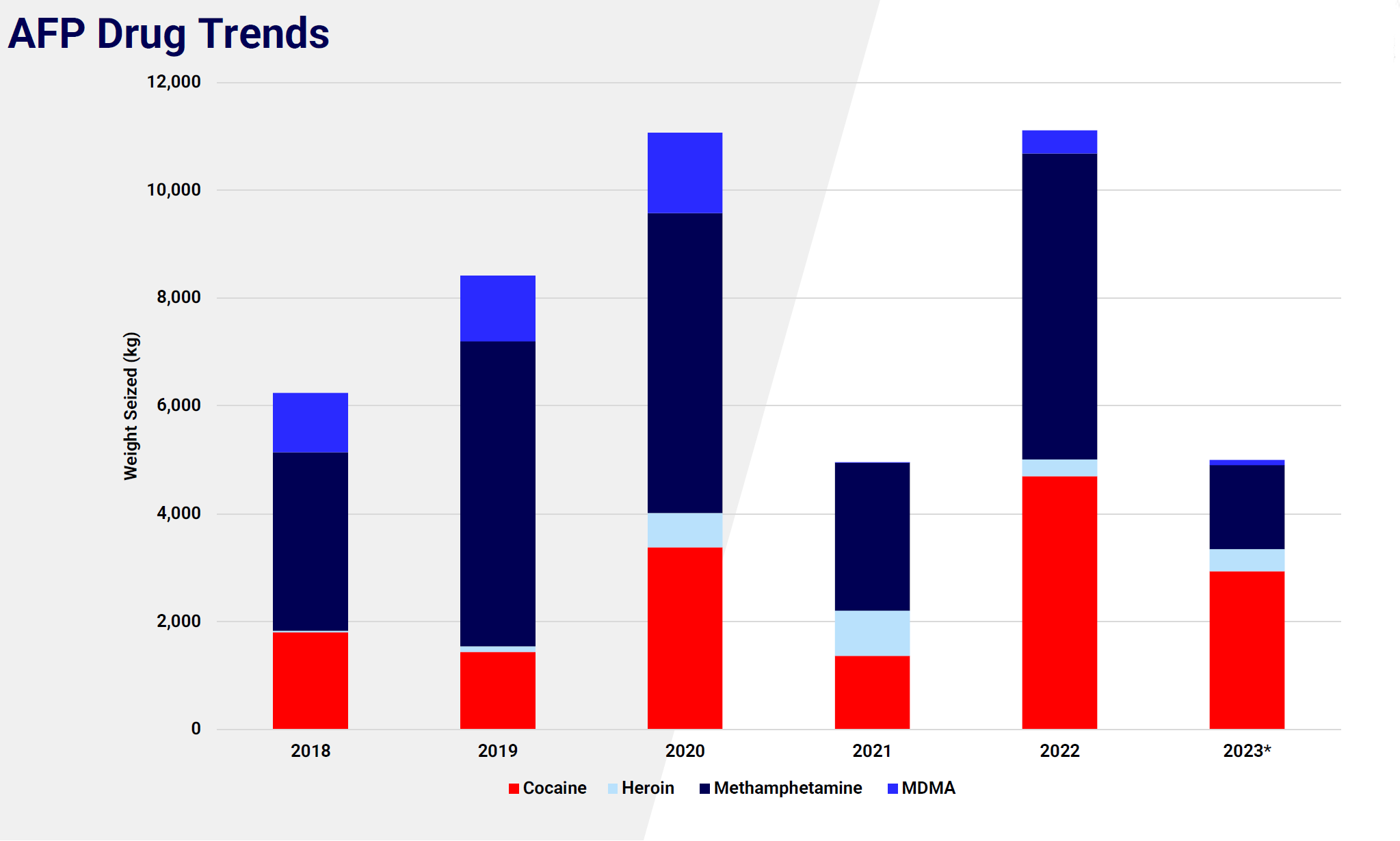
Near-infrared spectroscopy (NIRS) using “NIRLAB Narcotics”
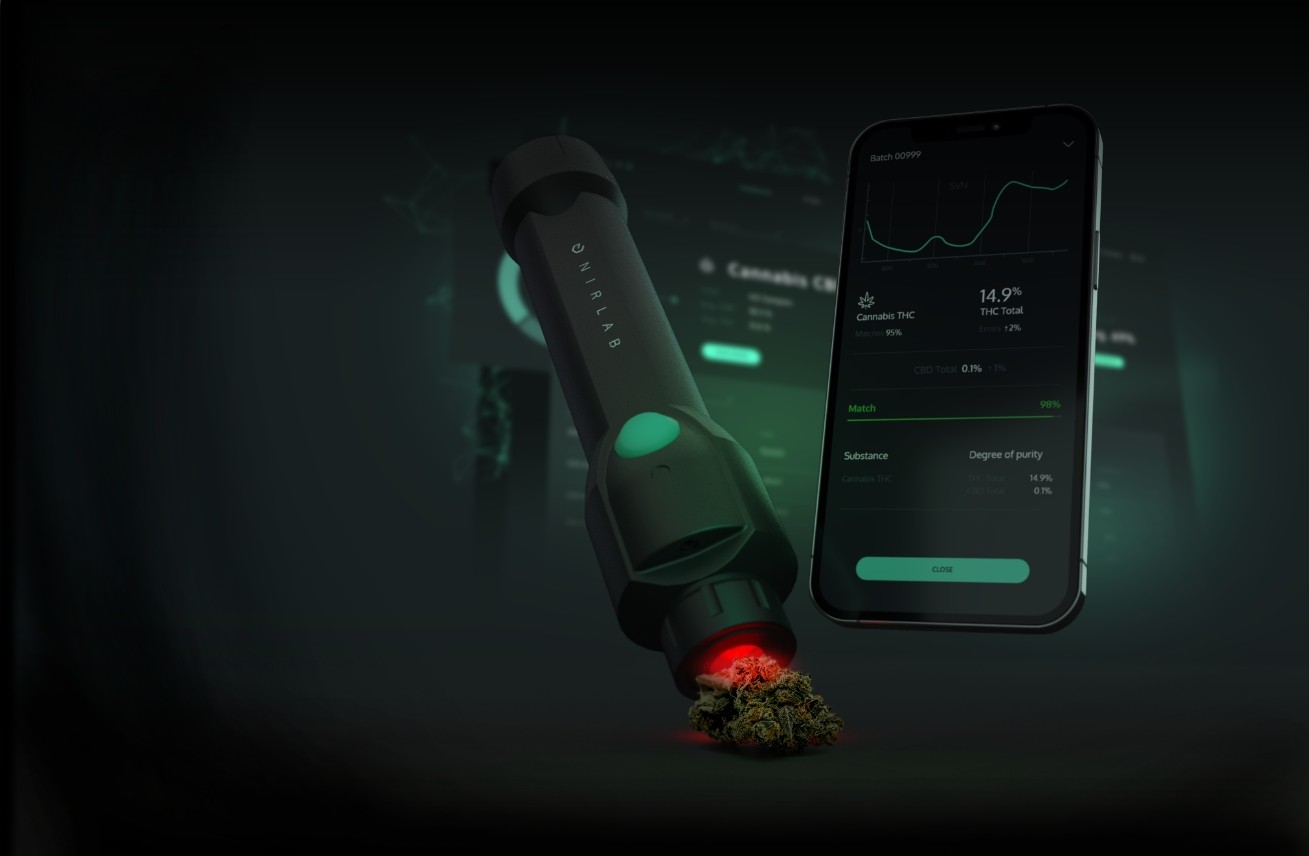
- Various portable technologies have been developed – limited in terms of cost, accuracy, ease of use and analysis3
- NIRS and chemometric modelling
- Highly selective, cost-effective, quasi-instantaneous, ultraportable and user-friendly4-7
- Predictions generated through chemometric modelling of a database containing relevant illicit drugs
- However, it is reliant on a database of relevant illicit drug specimens
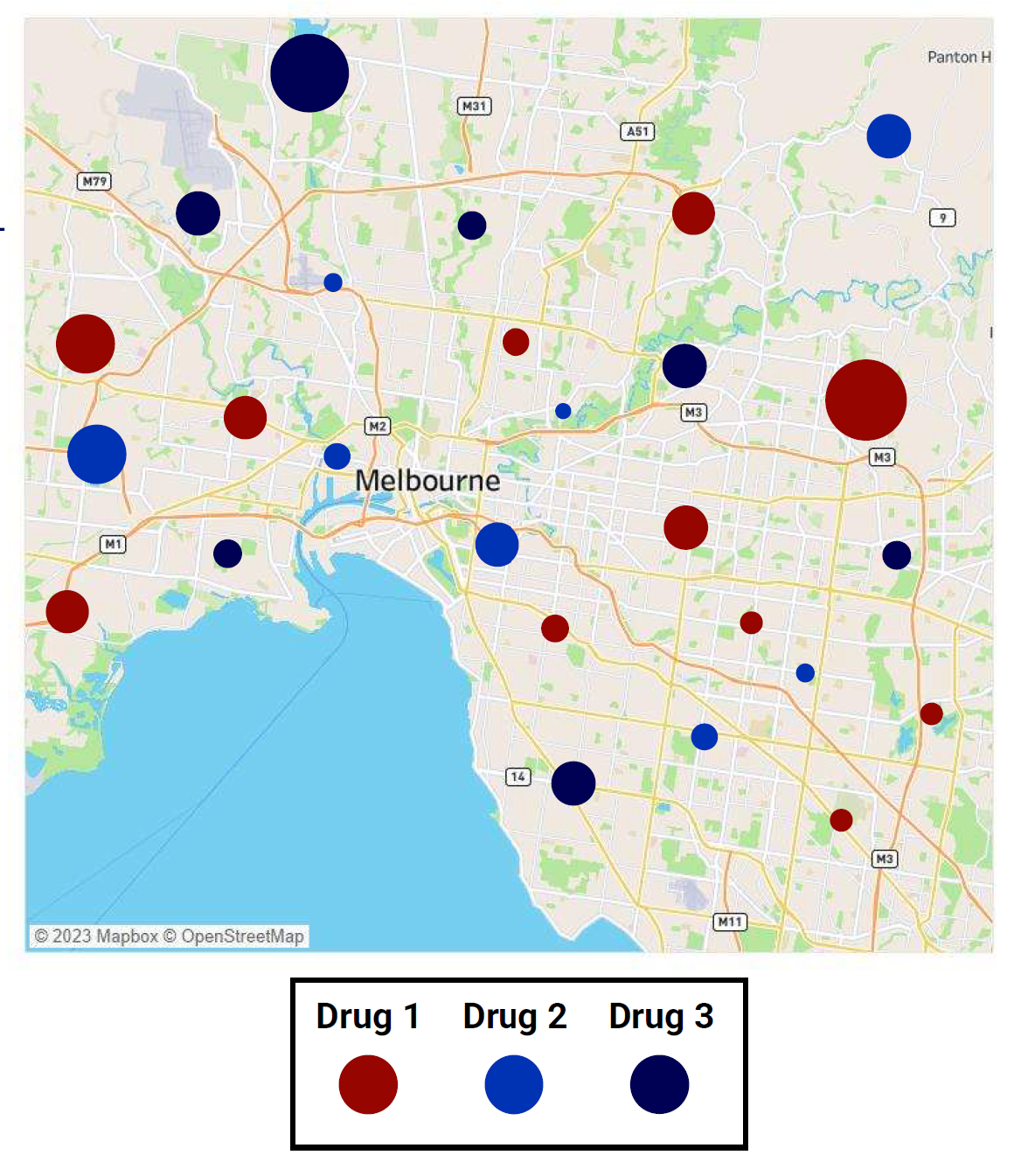
3 Alonzo et al., WIRES Forensic Sci, 2022. 4(6): p. e1461.
4 Kranenburg et al., Drug Test Anal, 2022. 14(6): p. 1089-1101.
5 Kranenburg et al., Forensic Chem, 2022. 30: p. 100437.
6 Coppey et al., Forensic Sci Int, 2020. 317: p. 110498.
7 Wermelinger et al., Forensic Science International, 2023. 348: p. 111605.
Previous Research:
NIRS in combination with chemometric modelling for portable drug testing is an expansive area of research. Previous work in Switzerland by the University of Lausanne 6,8 has demonstrated:
- Accuracy for identification of cocaine, heroin and cannabis specimens (sensitivity > 99%)
- Quantification is comparable to a validated reference method (ISO 17025 norm)
- Commonwealth – legislative requirement for purity determination for charges/sentencing
- Implemented by over 30 police forces internationally
- However, machine learning models built using drugs found in countries outside of Australia with different chemical compositions
6 Coppey et al., Forensic Sci Int, 2020. 317: p. 110498.
8 Coppey et al., Helv Chim Acta, 2023. 106(8): p. e202300052.
Aim:
To investigate portable NIRS and develop chemometric models for an Australian context to evaluate its potential in the rapid identification and quantification of illicit drugs.
Focus on methamphetamine and cocaine chemometric model development
Methods Overview:
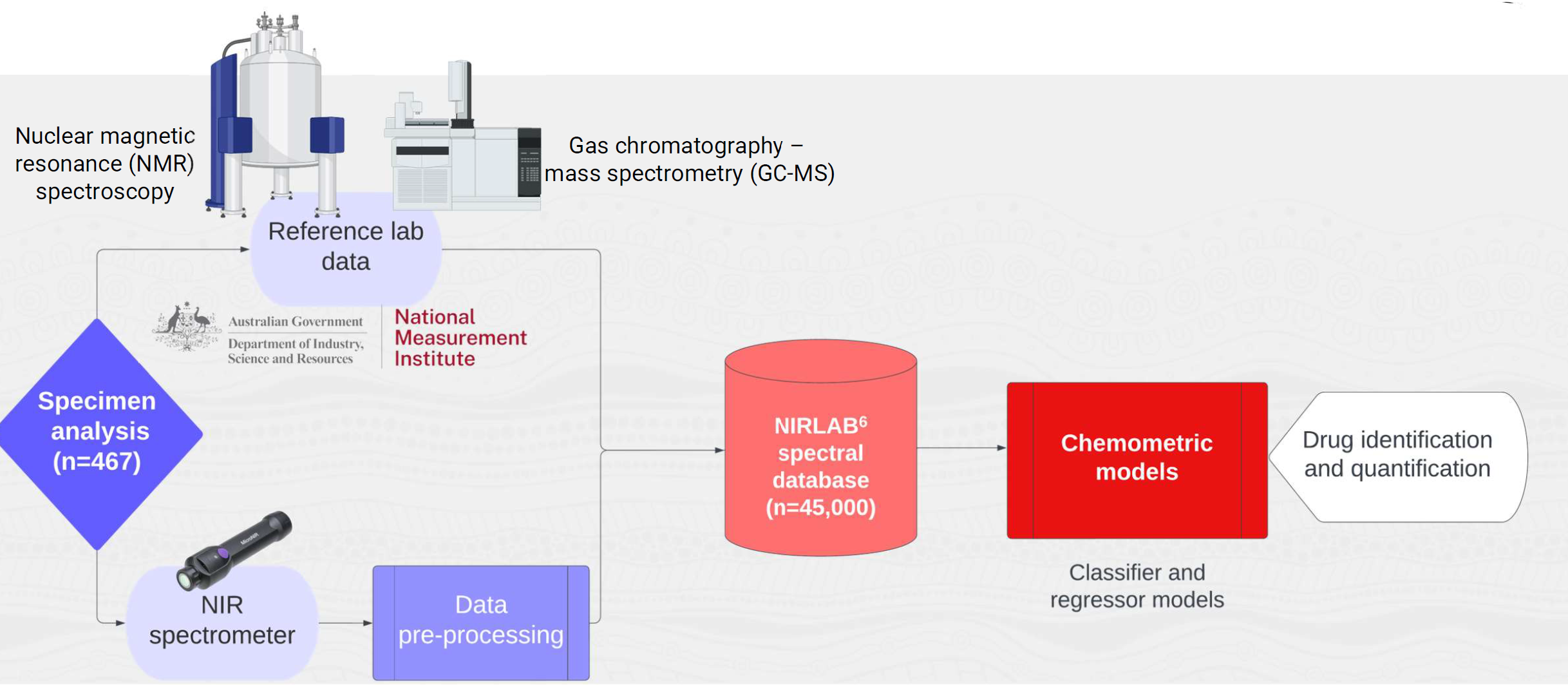
6 Coppey et al., Forensic Sci Int, 2020. 317: p. 110498.
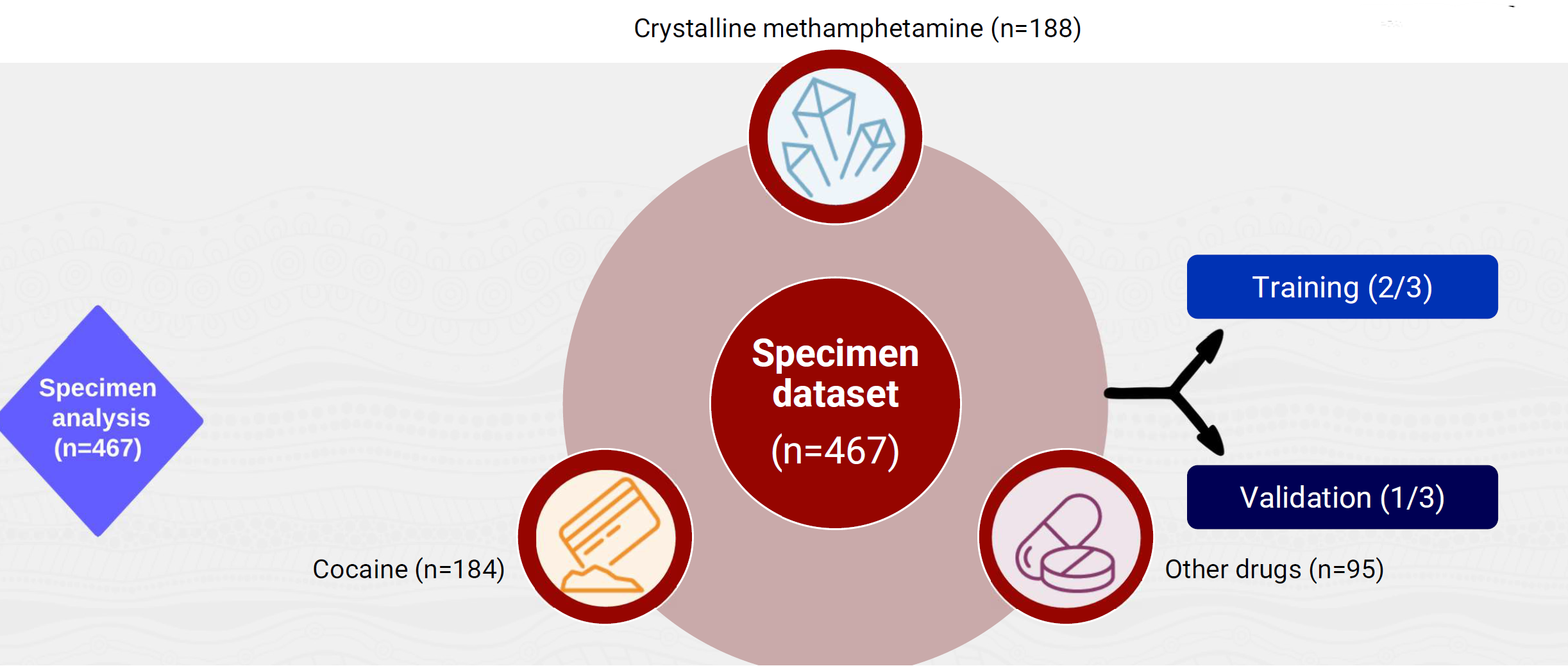
6 Coppey et al., Forensic Sci Int, 2020. 317: p. 110498.
Data Collection and Analysis:
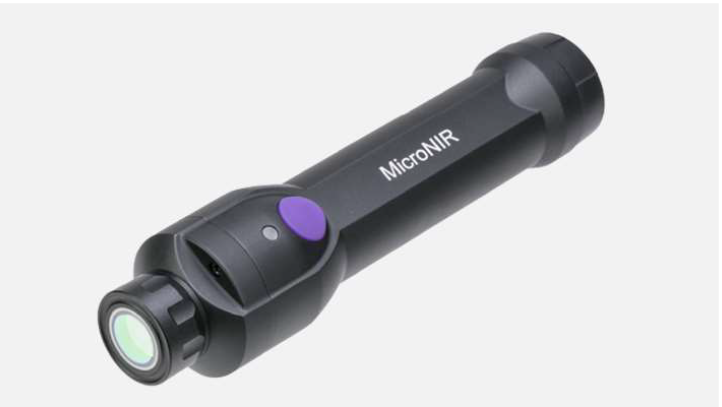
NIRS analysis
MicroNIR Onsite W 1700 (Viavi Solutions Inc)
- ~ 1 g of illicit drug scanned
- Scanned in triplicate (variable sampling point)
- Different sampling methods (direct contact and through plastic bag/glass)
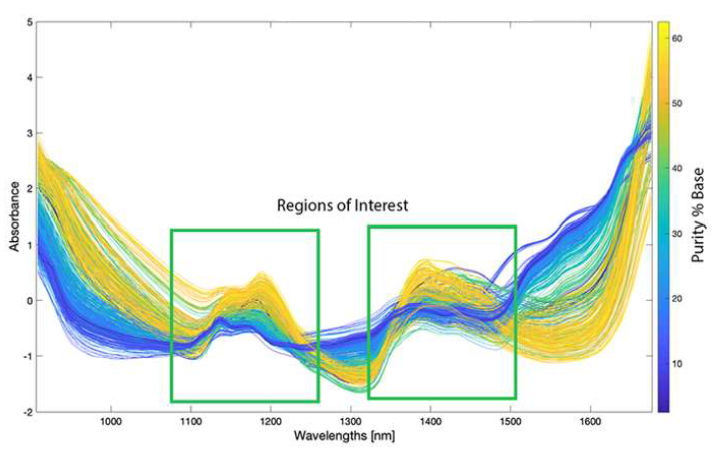
Chemometric analysis6
Pre-processing: standard normal variate
and/or Savitzky-Golay 2nd derivative
Classification/quantification:
- Extremely randomised tree methods
- Gradient-boosting classifier and
regressor methods

Output
Provides identification and quantification
- Indications given for major adulterants
- Otherwise, will identify as unknown substance
- Might give indication if close to another substance
6 Coppey et al., Forensic Sci Int, 2020. 317: p. 110498.
Results:
- Various NIR spectra of crystalline methamphetamine and cocaine HCl among other illicit drugs were collected (n=3060 spectra) and were related to purity data obtained from the reference laboratory
- Able to scan small quantities of drug seizures directly, through plastic bags and glass
Identification Results:
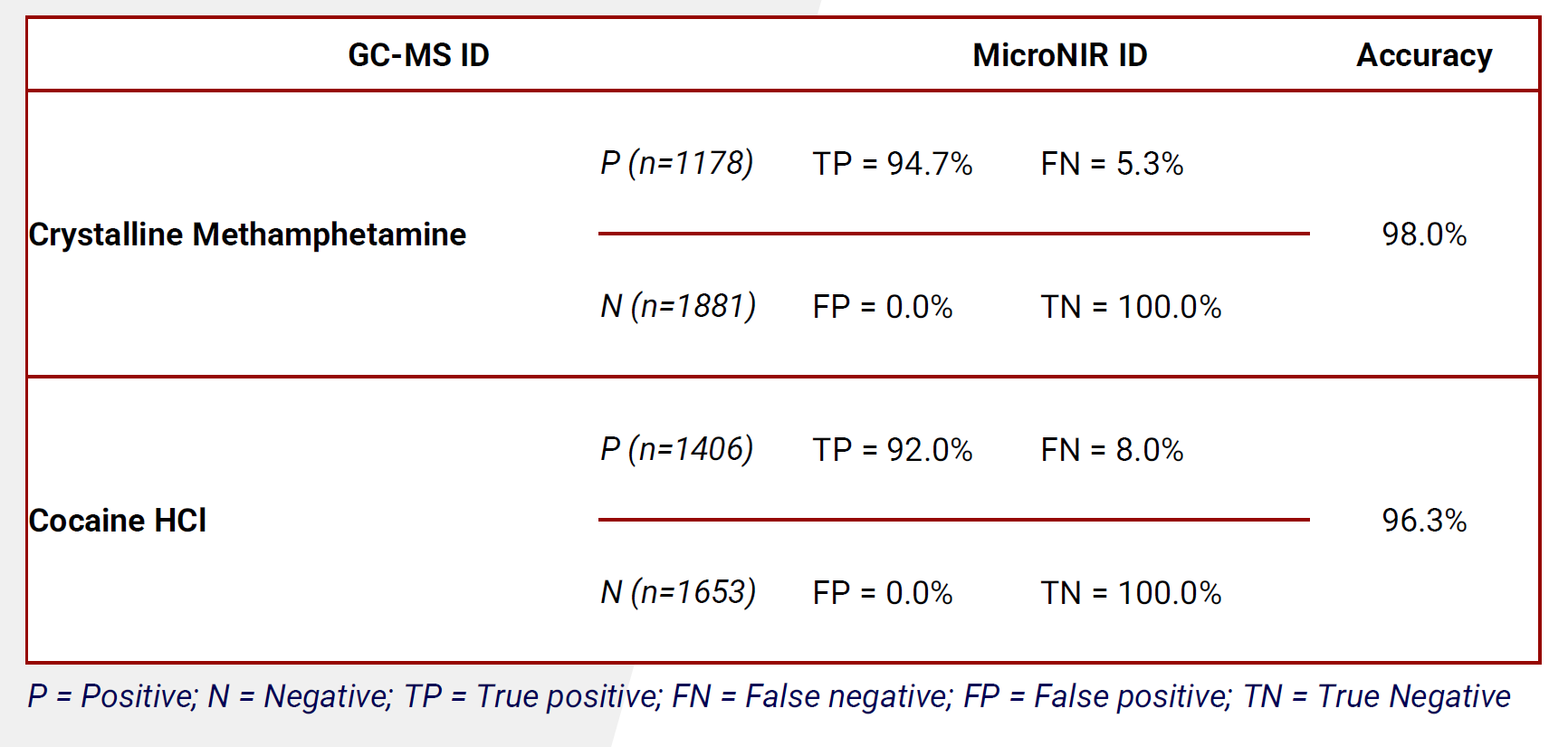
Quantitative Results: Methamphetamine
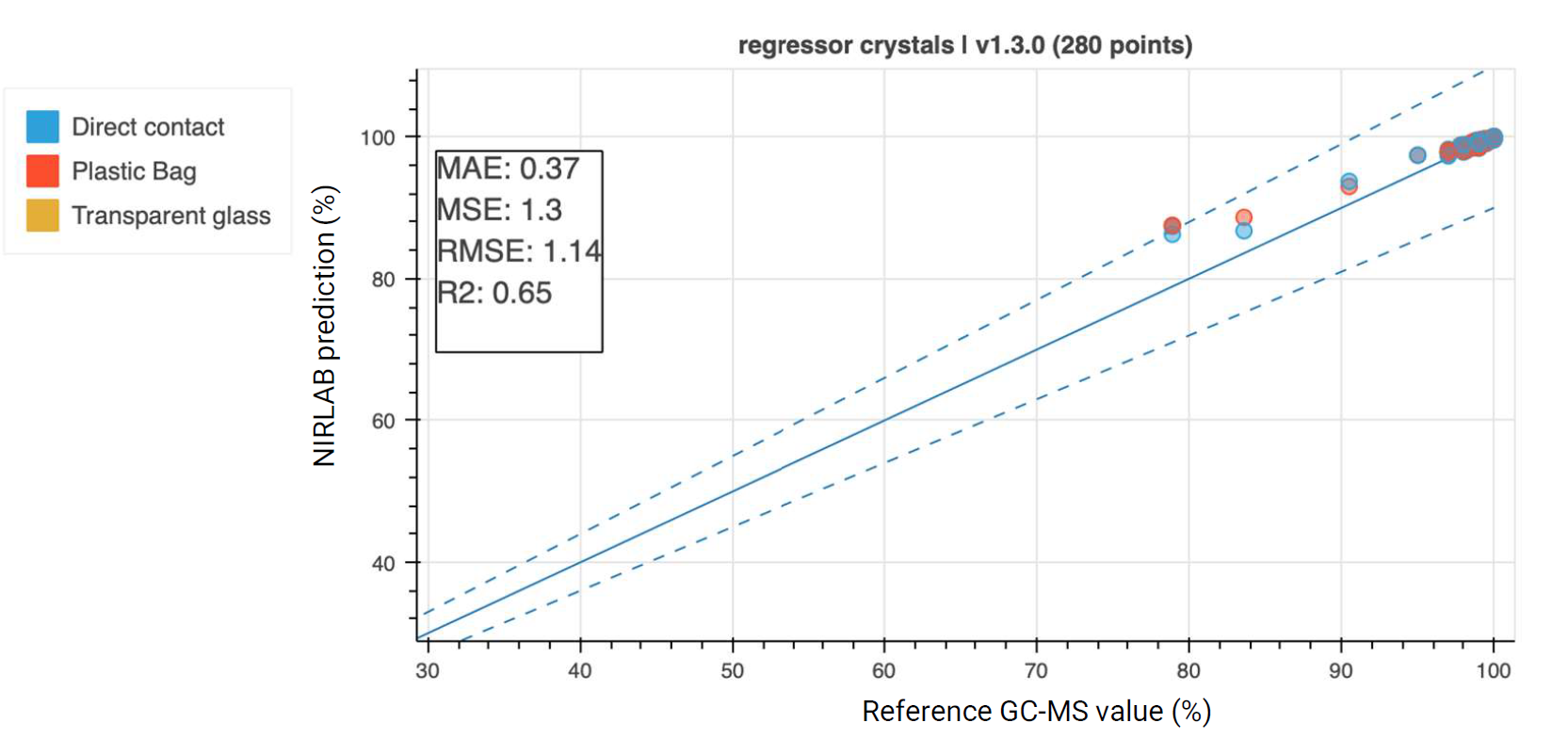
- Comparison between reference method quantification (GC-MS) and predicted value from NIR
- High quantification accuracy (within uncertainty range)
- No large difference between measure type
Quantitative Results: Cocaine
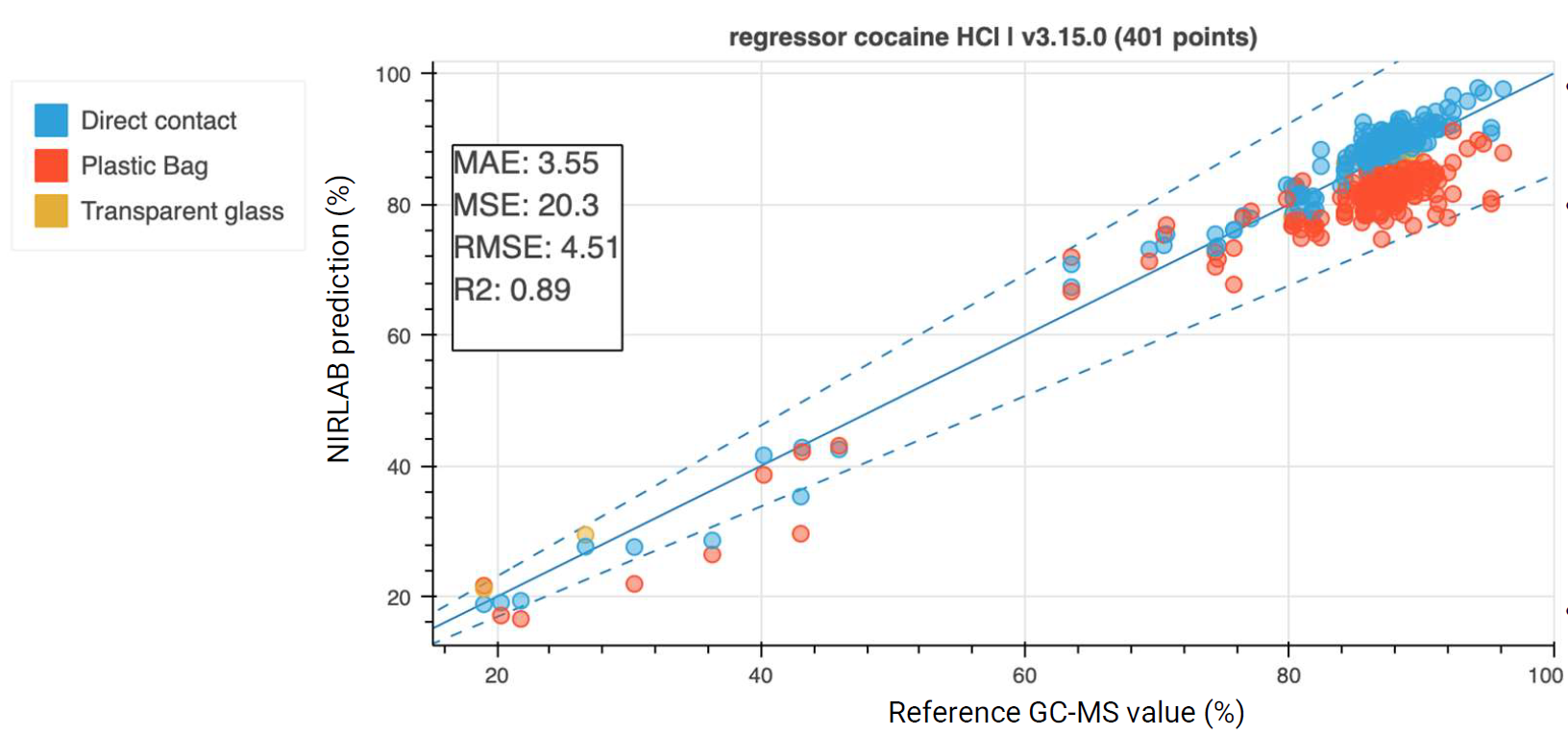
- Lower purity specimens had issues with quantification
- However, the vast majority of specimens fell within error ranges
- No discernible difference between through glass and direct contact
- Scans through plastic bags were more likely to underestimate purity
- Opposite true for direct contact
Outcomes:
Experimental Outcomes
- NIRS accurately identified the majority of methamphetamine and cocaine specimens (96.3 – 98.0%) and quantified within uncertainty limits (± 15%)
- Issues with identification were more likely related to low-purity specimens (can be addressed easily in future research)
- Greatly support frontline policing
- Improve investigative and intelligence capabilities
- Help reduce casework loads within forensic laboratories and enables reprioritisation

Benefits the project brings:
Successful project leading to the development of an operationally viable and impactful method for drug identification and quantification
- Law enforcement implications: AFP Forensics will operationally improve upon:
- Safety
- Efficiency
- Operational effectiveness
- Also provides an intelligence tool to guide investigations and broader security context
Thanks to Natasha Stojanovska (AFP) and Harrison Fursman (UTS) for granting permission to repost their research
